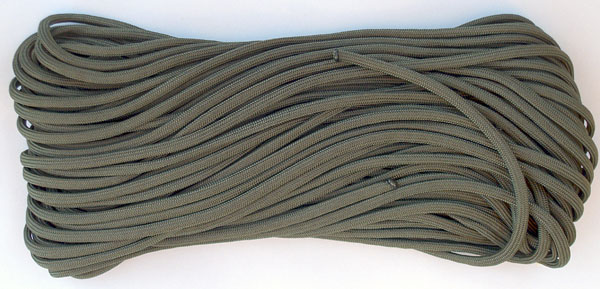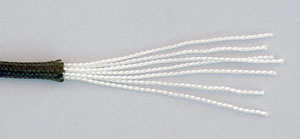Offering tasty baits, whether manmade or natural, is the way to lure hungry trout released from the hatchery.
Fly-fishing and trout go together like hotdogs and baseball, yet
during the early season, conditions may not be favorable for any form of
artificial offering. Granted, it’s a lot of fun watching a wily trout
rise beneath a dry fly, and the anticipation of awaiting the strike is
almost beyond description. Conversely, it is equally frustrating to
watch a trophy trout cruise within range of a perfectly presented nymph
then completely ignore your offering.
There’s one thing, however, that’s rarely ignored: bait. Most trout,
especially those fresh from the hatchery, rarely forego the opportunity
to dine on an easy meal.
SALMON EGGS
Salmon eggs are a highly productive trout bait, especially on opening
day. They’re the right size and shape, and in many instances, they are
saturated with flavored oils for added enticement. Cheese-flavored eggs
seem to be the most popular.
Salmon eggs come in a variety of colors. While red and yellow seem to
top the list with fishermen, many anglers have switched to the new
fluorescent colors, claiming that they’re more productive during the
season’s first few days. And, for some unexplained reason, trout tend to
be more attracted to various shades of red over many of the brighter
colors.
The popularity of salmon eggs has always been quite high among
early-season trout anglers, so high that hook manufacturers went to the
trouble to design hooks specifically for use with salmon eggs. They are
available in various sizes ranging from No. 8 to No. 14. These hooks
have extremely short shanks and come in both turned-up and turned-down
eye styles. When properly rigged, the hook can easily be concealed
entirely within a single salmon egg. Consequently, the only thing the
rainbow, brookie or brown actually sees, even in clear water, is the egg
itself.
CHEESE
What do you do when your local tackle shop is sold out of salmon eggs?
Make a quick stop at the corner convenience store. Most are open 24
hours a day, and they all sell cheese.
Most soft cheese products make great trout baits, particularly when
you’re targeting trout that are fresh from the hatchery. Cheese oils
rapidly disperse with the currents, often luring hungry trout from
incredible distances. Additionally, soft cheese can readily be formed
around a salmon egg hook and molded into pellet-shaped morsels. When all
other forms of bait fail, a small glob of cheese may save the day.
MARSHMALLOWS
The first person to use marshmallows for bait was either very creative
or totally frustrated. Whatever the case may have been, it worked. Yes,
those tiny cocktail marshmallows have saved the day for many trout
anglers, especially during the season’s first few days. While
marshmallows don’t resemble any form of trout food, hatchery or natural,
they do emit sufficient odor to attract various species of fish. In
fact, some anglers complain that they are too effective.
Marshmallows can be cut or torn into smaller pieces, then easily
formed to cover a salmon egg hook. However, because they have a
relatively high air content, marshmallows have the tendency to float.
Therefore, a small piece of split shot, preferably BB size must be added
to the line about 12 to 18 inches above the hook. This will place the
bait close to the bottom. Be sure not to add more weight than necessary
to hold bottom, while still allowing the bait to drift naturally. Add
too much weight and you’ll spend most of your time trying to dislodge
the split shot from snags.
CORN
While fresh corn, yellow or white, doesn’t seem to work well at all,
canned, whole-kernel, yellow corn makes a great trout bait. Some believe
this is because fine-ground grains are one of the main components in
fish pellets, one of which may be corn. The list of ingredients on the
side of the fish pellet can does not specify which types of grains are
used, but corn seems to top the list of most commercially prepared fish
and animal foods. If this is indeed the case, there’s a good argument
for the use of corn for trout bait, particularly during the early days
of the season.
Again, the bait should completely cover the hook. Depending on the
hook’s size, this may require two or possibly three kernels.
Fortunately, corn has a slight negative buoyancy, therefore, only one or
two split shot may be required to maintain the proper depth. If the
stream or river currents are somewhat fast, more weight may be required
to maintain the correct depth.
NATURAL BAITS
Worms
While some designated trout streams mandate the use of artificial lures
or flies only, many stocked streams permit the use of various forms of
natural bait. Obviously, before fishing any body of water, it is a good
idea to carefully scrutinize the regulations pertaining to that
location. If it is permissible to use live bait, then the selection is
almost endless. After feeding on fish pellets for nearly a year, newly
stocked trout have two options: switch to natural foods or starve to
death. A week or two after stocking, most trout will eat just about
anything that comes along, especially if it looks perfectly natural.
Nothing is more appealing to a hungry trout than a fat, pink, juicy
garden worm floating with the currents. Even when the weather has been
too cold for the worms to occur naturally, trout will instinctively
pounce on a properly presented worm. The key to success is proper
presentation. As with all forms of bait, the hook should be well hidden.
Additionally, if a piece of split-shot is required in order to reach
bottom, use just enough weight to maintain the correct depth, while
still allowing the bait to drift naturally with the currents.
The worm should be cast upstream at a 45-degree angle, preferably
well above the head of the pool. Just as soon as the bait hits the
water, close the reel’s bail and begin a slow, deliberate retrieve. Keep
sufficient tension on the line to detect the slightest strike and also
to gently lift the bait over the snags.
Minnows
A few weeks into the season, trout will actively feed on minnows. While
many states do not permit the use of native minnows, tiny fathead
minnows are a good substitute, particularly when they measure no longer
than 2 inches. The minnows can be either lip-hooked or impaled just
beneath the dorsal fin, thereby keeping them alive and active as they
drift through deep pools. Some anglers find that attaching a small,
clear plastic float aids them in casting the minnow to the most
productive locations, such as close to submerged boulders or close to an
undercut segment of shoreline.
Crayfish
Small crayfish, those measuring just 1 to 2 inches in length, are great
trout baits, especially as the season progresses and water temperatures
begin to rise. They can be hooked through the tail and scooted across
the bottom, or hooked carefully through the nose and walked over the
bottom. Both techniques seem to be equally effective. Keep in mind,
however, that crayfish reside and often hide beneath flat rocks;
therefore, unless you keep constant tension on the line, they will
quickly scurry under any suitable rock.
Hellgrammites
Hellgrammites, the larvae of dobson flies, are likely among the ugliest
creatures that nature could have ever dreamed of. They have a prehensile
tail, a soft black body with lots of legs and head that resembles that
of a gigantic ant. Unlike a butterfly that becomes a beautiful, winged
creature after metamorphosis, the dobson fly just grows wings and
remains ugly. You can find them residing on the back side of partly
submerged, flat rocks in most free-flowing streams. They’re not pretty,
but they’re irresistible to any trout.
Hellgrammites have a hard-shell collar that is located directly
behind the nasty-looking head and powerful pincers. The collar is a good
place not only to hold them, but additionally, it’s a great place to
insert your hook. In this particular instance, the hook will be exposed,
therefore, a small No. 10, short-shanked, bronze hook will be your best
bet. The hook’s color closely resembles that of the hellgrammite. The
only problem trout anglers complain about when using hellgrammites is
that everything in the stream seems to enjoy eating them.
As the season progresses, other forms of natural baits will become
highly productive. Don’t overlook such crickets, grasshoppers, moths and
various forms of insect larvae. As each of these becomes available
naturally, they also become an integral part of a trout’s diet.





























 Waterpoof Capsule –
Waterpoof Capsule – 



 Ontario SP10 Marine Raider Bowie –
Ontario SP10 Marine Raider Bowie – 




 Light My Fire Swedish Firesteel Mini –
Light My Fire Swedish Firesteel Mini – 



